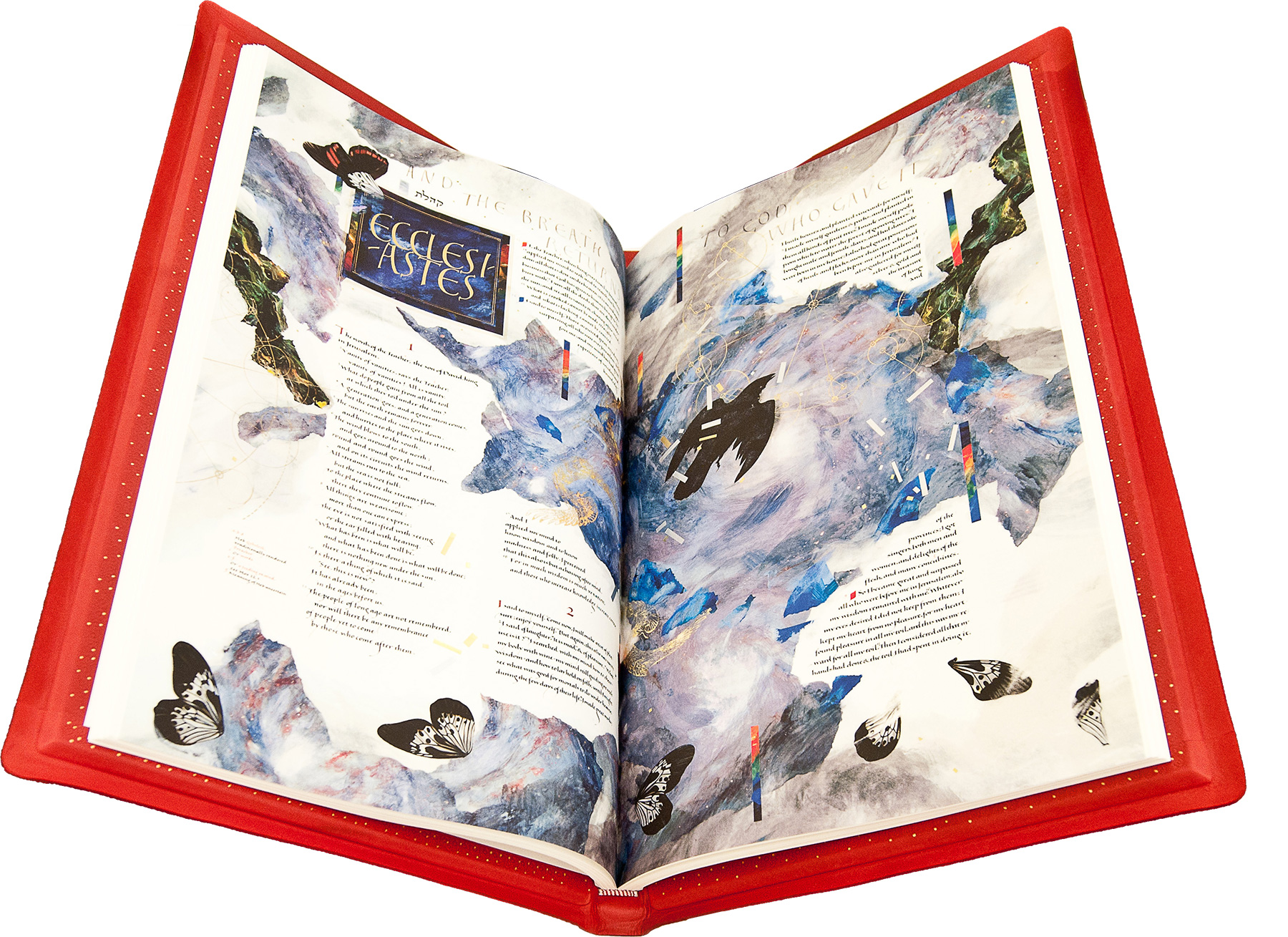
Working by hand through calligraphy and illumination, they made crucial, creative decisions about which portions of text deserved emphasis and illustration. The result was more than new renditions of sacred Scripture: They created works of art that illumined their own understanding of the Bible.
Today, centuries after the printing press made the monks’ process obsolete, a hand-made Bible is being created again. Benedictine monks at Saint John’s Abbey and Saint John’s University in Collegeville, Minn., have commissioned the creation of a manuscript that is handwritten on vellum using quill pens, as in medieval times. As Bibles of past centuries contained then-contemporary imagery, the Saint John’s Bible uses current imagery, creating a book that is an expression of who God is that speaks to today’s Christian communities.
Four volumes — the Pentateuch, Wisdom books, Psalms and the Prophets — of the six-volume project are complete, and the monks have published a facsimile version, known as the Heritage Edition, one of which is housed in the Special Collections of the William H. Hannon Library. LMU’s copy came to the university through a gift from Laura Williamson ’74 and her husband, Steven, in honor of Robert B. Lawton, S.J., former LMU president.
When Cecilia González-Andrieu, assistant professor of theology, teaches a Christology course called “Meeting Christ in Faith and Art,” she requires students to study texts by theologians about the nature of Jesus Christ and to explore how Christian communities in history have interpreted Christ through art. She takes her students on a “pilgrimage” to the library to view the Saint John’s Bible.
“They are enthralled by the art,” González-Andrieu says. “Here is art that is contemporary coming through an ancient text as it enlivens anew the rich wisdom of Scripture.”
At the course’s conclusion, the theology students create their own works of art to express their interpretation of who Christ is in their lives. In fall 2010, when González-Andrieu last taught the course, some drew directly from the Saint John’s Bible, creating illuminated books of their own. Three students were asked by the library to donate their work to Special Collections.
“It was a moving moment for them,” she says. “They were blown away when they realized that LMU will be around for another 100 years and students in the future will see the work they’ve done.”
